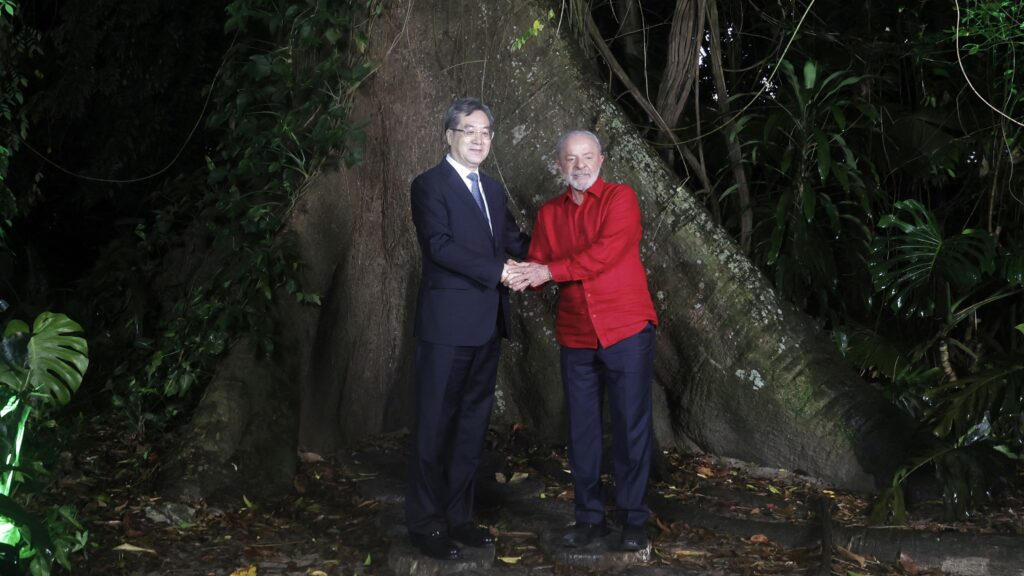One wonders what in the world Catholic Rome has come to when one sees the waving of the Chinese Communist flag in St. Peter’s Square during a Wednesday Papal general audience.
Ever since Pope Francis signed a provisional agreement with the People’s Republic of China (PRC) in 2018, the presence of Chinese communism has subtly become present in Catholic circles. The details of the accord have never been made public, though the Holy See has both recognized the legitimacy of the Chinese Catholic Patriotic Association (CCPA), i.e., the parallel church to Rome erected by the Chinese Communist Party (CCP) in 1957, and Beijing’s right to name bishops for China—the Bishop of Rome merely confirms the choice.
This renunciatory and negationist approach resembles the Vatican Ostpolitik policy of the Cold War era, when it pursued diplomacy with the most adverse-type regimes, while ignoring the internal religious oppression of Catholics and other Christians.
Ostpolitik, or change through rapprochement, is a concept conceived by the German Social Democratic Party member Egon Bahr in 1963; it was implemented by West German Chancellor Willy Brandt in 1969 to normalize relations between the Federal Republic of Germany (former West Germany) and the Soviet-controlled German Democratic Republic (former East Germany).
At the behest of the Undersecretary of the Congregation on the Extraordinary Ecclesiastical Affairs, Archbishop Agostino Casaroli, Ostpolitik became the means of the Roman Church to engage the PRC and the Warsaw Pact nation-states under the pontificates of Popes John XXIII (1958–1963) and Paul VI (1963–1978).
As part of their appeasement, the Holy See, for example, agreed to halt all public criticism against the atheist Communist doctrine and permit each respective government to micromanage its ecclesiastical affairs.
The first significant development in the Vatican’s Ostpolitik was a partial agreement with the pro-Soviet Hungarian government on 15 September 1964, which in turn facilitated similar agreements with other Soviet bloc countries. Although the exact provisions were never published, the Hungarian Church was granted permission to name some bishops and to send its seminarians to study at the Hungarian College in Rome. In return, Catholic schools had to be secularized, and anyone who dissented from this was targeted as an enemy of the State.
Such was the case with Archbishop-Prince of Esztergom and Primate-Regent of Hungary, Cardinal József Mindszenty, who had openly opposed the measures of the Hungarian regime. For this, he was accused, arrested, and tortured for ‘subversive activity’.
Freed by a provisional government during the Hungarian Revolution in 1956, within a month, Soviet troops entered the country to arrest him. He then took refuge in the U.S. embassy in Budapest and remained there for the next 15 years, rejecting appeals from the Vatican to leave Hungary. He relented only in 1971, at the entreaty of the U.S. President Richard M. Nixon.
Pope Paul VI declared Mindszenty a ‘victim of history’ (instead of Communism), and in an effort to further placate the Communist regime, he lifted the excommunications imposed on the cardinal’s persecutors. Worst of all, on 5 February 1974, the Pope stripped him of the Primacy of Hungary and declared his See of Esztergom vacant, replacing him with an apostolic administrator.
Mindszenty said that this was the greatest cross he had to bear in his life.
The application of Ostpolitik also led to the infiltration of the Vatican by Communist secret intelligence agencies, like the Soviet KGB, the East German Stasi, the Czechoslovak StB, the Polish SB, and the Hungarian AVH. During the Second Vatican Council (1962–1965), the SB tried to undermine the Polish Primate Cardinal Stefan Wyszynski by circulating to all the Council Fathers a memorandum accusing his orthodoxy.
‘The application of Ostpolitik also led to the infiltration of the Vatican by Communist secret intelligence agencies’
In the years after the Council, communist-bloc moles operated in Vatican offices and in the Vatican press corps, compromising the very negotiations so prized by Archbishop Casaroli and his associates.
All of this began to end with the election of Pope John Paul II in 1978, who unmasked the hypocrisy of the Soviet–Warsaw Pact dictatorships by taking them head-on. With the assistance of U.S. President Ronald Reagan, the Polish pope financed anti-communist groups, the most salient being Solidarity, which not only overthrew the communist body politic in Poland in 1989, but also triggered a domino effect that brought down the other Communist dictatorships, including the U.S.S.R.
Thus far, the Vatican’s clandestine provisional accord is doing nothing other than propelling the Catholic Church into nonchalant acquiescence with a Communist regime that seeks nothing other than to impose its atheistic doctrine on every one of its subjects. Crosses continue to be removed from churches, images of Jesus Christ and the Virgin Mary are replaced with those of Xi Jinping, the clergy are forced to preach the CCP ideology, and ‘underground Catholics’ continue to be arrested.
Meanwhile, Pope Leo XIV, at the behest of the CCP, has thus far suppressed two historic dioceses of Xiwanzi and Xuanhua and replaced them with a new one under the name established by the CCP, the Diocese of Zhangjiakou, confirming the appointments of two CCPA bishops.
What have Vatican officials learned from the history of Ostpolitik, and how will this end? Your guess is as good as mine.
Related articles:







